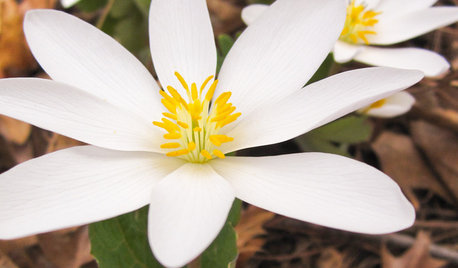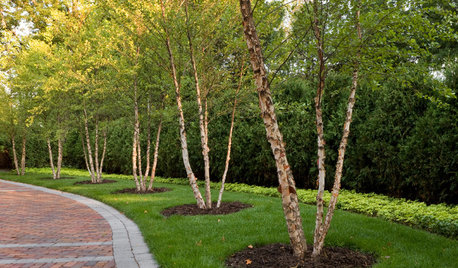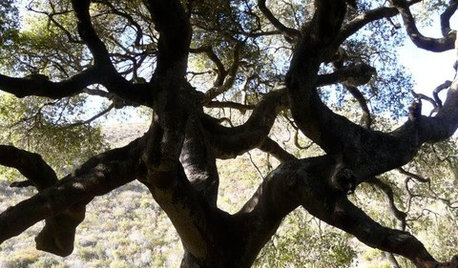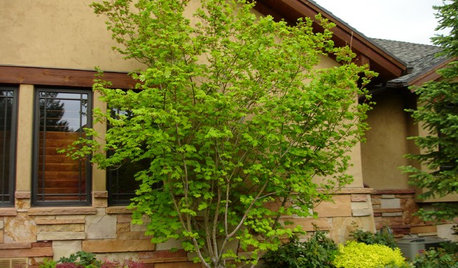Large-scale amendment in tree planting
Tattnall
9 years ago
Related Stories

GARDENING GUIDESWhen and How to Plant a Tree, and Why You Should
Trees add beauty while benefiting the environment. Learn the right way to plant one
Full Story
GARDENING GUIDESGrow Your Own Privacy: How to Screen With Plants and Trees
Use living walls to lower your home and garden's exposure while boosting natural beauty in your landscape
Full Story
DECORATING GUIDES5 Decorating Tips for Getting Scale Right
Know how to work art, sectionals, coffee tables, lamps and headboards for a positively perfect interior
Full Story
Great Design Plant: Sanguinaria Canadensis Lights the Spring Woodland
Bloodroot’s large, showy white flowers and attractive foliage brighten eastern woodland gardens in early spring
Full Story
LANDSCAPE DESIGNGreat Design Plant: Retreat to the Shade of Hardy Catalpa
Big foliage and a towering height provide a shady respite in summer, but that's not all hardy catalpa offers dedicated gardeners
Full Story
EDIBLE GARDENSHow to Grow 10 Favorite Fruit Trees at Home
Plant a mini orchard in fall, winter or early spring to enjoy fresh-off-the-tree fruit the following year
Full Story
LANDSCAPE DESIGNGreat Design Plant: River Birch
Pick this rugged native tree for its intriguing peeling bark, soil adaptability or leaves that bring dappled shade to a garden
Full Story
DECORATING GUIDES13 Strategies for Making a Large Room Feel Comfortable
Bigger spaces come with their own layout and decorating challenges. These ideas can help
Full Story
CALIFORNIA NATIVE PLANTSGreat Design Plant: Coast Live Oak
The stuff of legends and memories, this California tree is one to build a whole landscape around
Full Story
LANDSCAPE DESIGNGreat Design Plant: Vine Maple
Exciting year-round color and adaptability make this highly ornamental native small tree a top choice for home gardens
Full Story









TattnallOriginal Author
TattnallOriginal Author
Related Professionals
Folsom Landscape Architects & Landscape Designers · Concord Landscape Contractors · Dallas Landscape Contractors · Fridley Landscape Contractors · Holland Landscape Contractors · Middletown Landscape Contractors · Seven Hills Landscape Contractors · Tamarac Landscape Contractors · Waldorf Landscape Contractors · Quartz Hill Landscape Contractors · North Hills Landscape Contractors · Rockford Siding & Exteriors · Glasgow Decks, Patios & Outdoor Enclosures · Paradise Valley Decks, Patios & Outdoor Enclosures · Laguna Beach Stone, Pavers & ConcreteToronado3800 Zone 6 St Louis
brandon7 TN_zone7
TattnallOriginal Author
TattnallOriginal Author
TattnallOriginal Author
TattnallOriginal Author
TattnallOriginal Author
davidrt28 (zone 7)
davidrt28 (zone 7)
akamainegrower
TattnallOriginal Author
brandon7 TN_zone7
Embothrium
brandon7 TN_zone7
TattnallOriginal Author
Embothrium
wisconsitom
TattnallOriginal Author
brandon7 TN_zone7
TattnallOriginal Author
Embothrium
mad_gallica (z5 Eastern NY)
davidrt28 (zone 7)
TattnallOriginal Author